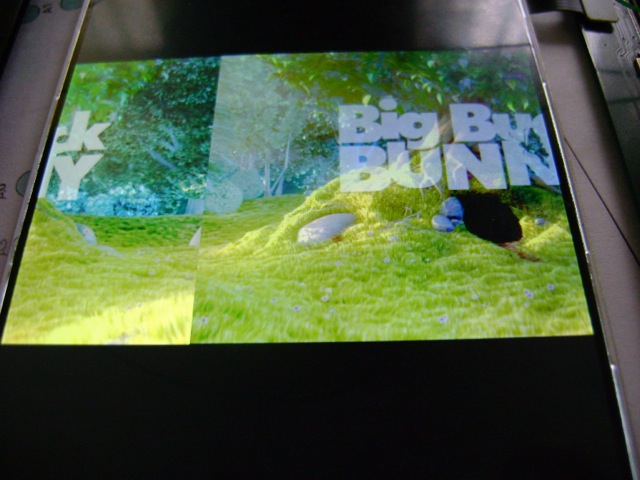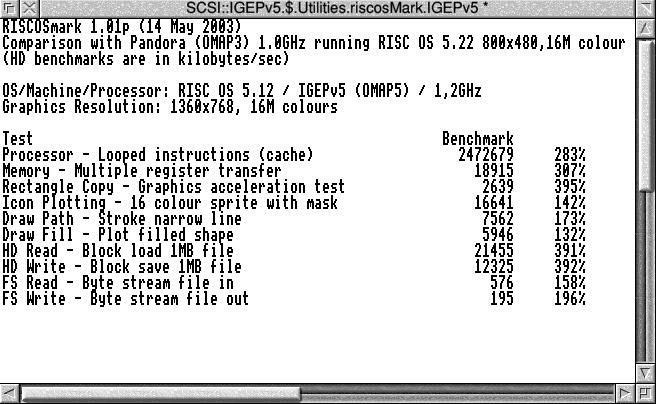Terran
Active Member
- Joined
- Oct 30, 2009
- Messages
- 527
- Age
- 33
EvilDragon [Englischer Beitrag] said:And here it is, as promised: The second part of my Pyra News post
1. The Hardware
Well, we had quite a few issues to solve which slowed things down a bit, but it seems the solution has been found.
I'll try to explain what happened and what took us four weeks to solve.
As you know, we were trying to get the Solomon (Rotator) chip to work.
This is not an easy task - there are quite a lot of timing settings between the OMAP5, the Solomon Chip and the Panel Driver which need to be properly setup and which even affect each others.
Calculating proper, usable values alone is quite a time consuming task, but it's even harder when you have a hardware issue you didn't really know about.. as you first need to find that out...
Well, without the rotator chip, the display works without any issues.
With the rotator chip included in the setup, we didn't really get a picture anymore - sometimes a bit of flickering, but nothing really.
Of course, we thought the timings were not properly done yet and tried to fix them... but without much success.
Nikolaus checked the hardware and found out that the voltage for the solomon chip was too low. So he started looking for the issue,
After some more tests, he found a quick workaround by adding some wires to the setup. Apparently the LCD cable and some traces were too thin for the power needed, which was a good guess.
With that workaround, the timings could be tried. Nikolaus managed to get a picture... but slightly shifted (as you can see at the picture).

However, Nikolaus needs to continue to work on the hardware, so I made a setup at home involving the OMAP5 devboard connected to the Pyra Mainboard and the LCD, a Pandora and a webcam.
notaz can use that setup to fiddle around with the LCD and see the result - and he got it to work stable and properly, no shift anymore.
That's for the unrotated image, but fully going through the Solomon chip, which is the most important step! Next step is to enable rotation and find the proper setup, but with the timings we already found out now, it should (hopefully) be not a too hard step.
In the meantime, Nikolaus made a lot more tests found the weaknesses and improved the setup to be A LOT more stable.
Since today he knows what needs to be changed to solve these power issues, and once that's done, he can finally finish the CPU Board.
So it took quite a while, but the important thing is that there's a solution
As we got all parts to populate the prototypes already, once the CPU Board layout has been finished, populating it should happen within short time frame.
2. Financing
The closer we get to the production, the more detailled our cost calculation is.
As promised, there's enough money to fund the full development - but we will not have the money to fund the full production.
Which is nothing to be surprised with - as we need to buy a lot of parts upfront in high quantities, we need about 500,000 EUR (half a million EUR!) for the first batch.
This is quite a bit of money (at least for us)
About half of that doesn't need to be paid before the production of the units is finished, which is great.
And I'll also try raising as much money upfront so that preordering will cost you as little money as possible!
There are multiple possibilities (looking for some more investors, getting a short-frame credit for the production run, the upcoming RetroPi2-project at Kickstarter, etc.)
I don't want to scare you, as we know we can do it (I managed to survive the Pandora!), but as financing the production is also part of the whole process, I thought I'd let you know that.
Well - and donations help as well, which I want to mention here.
As you might've noticed, we got a whopping 9000 EUR donation yesterday - THANKS A LOT to the sponsor
We'll have the next goal up within the next few days, as I'll get the accurate pricing for the case mold then.
Übersetzung said:Und hier ist wie versprochen, der zweite Teil des Pyra Newsposts
1.) Die Hardware
Wir hatten einige Probleme zu lösen die uns verlangsamt haben, aber es sieht so aus, als ob das Problem gefunden wurde.
Ich versuche zu erklären, was passiert ist und warum das vier Wochen dauerte zu lösen.
Wie ihr wisst, versuchen wir den Solomon (Rotations-Chip) Chip zum funktionieren zu bringen.
Das ist keine leichte Aufgabe - es gibt viele Timing Einstellungen zwischen dem OMAP5, dem Chip und dem Panel-Treiber welche ordentlich Eingestellt werden müssen und sie gegenseitig Beeinflussen.
Ordentliche und verwendbare Werte berechnen braucht schon einiges an Zeit, aber es ist noch schwerer, wenn ein Hardwarefehler vorliegt und du nichts davon weißt... da du das erst herausfinden musst...
Ohne dem Rotations-Chip funktioniert das Display ohne Probleme.
Mit dem Chip im Setup haben wir kein richtiges Bild mehr bekommen - etwas flackerndes, aber sonst nicht wirklich.
Natürlich dachten wir, dass das Timing nicht korrekt ist und versuchten das zu beheben... ohne großem Erfolg.
Nikolaus hat die Hardware geprüft und hat herausgefunden, dass der Solomon Chip zu wenig Spannung bekommt.
Deshalb hat er nach einem Fehler gesucht und nach ein paar Tests einen schnellen Workaround, durch hinzufügen von Leitungen, gefunden.
Anscheinend sind beim LCD-Kabel und einige Leiterbahnen zu dünn für den Strom der benötigt wird, was eine gute Vermutung war.
Mit dem Workaround konnte das Timing getestet werden. Nikolaus hat ein Bild bekommen... aber leicht verschoben (wie ihr im Bild sehen könnt).

Wie auch immer, Nikolaus muss an der Hardware weiterarbeiten, deshalb hab ich ein Setup zuhause, indem das OMAP5-Devboard mit der Pyra und dem LCD verbunden ist und einer Pandora mit Webcam.
notaz kann das Setup verwenden und das LCD sehen - und er hat es geschafft, dass es ordentlich und stabil Funktioniert, kein verschobenes Bild mehr.
Das ist für das nicht rotierte Bild, aber das komplette Setup des Solomon Chips ist wichtig! Der nächste Schritt ist die Rotation einzuschalten und ein ordentliches Setup zu finden, mit Hilfe des Timings, dass wir bereits haben, ist das (hoffentlich) kein schwerer Schritt..
Währenddessen hat Nikolaus mehr Tests gemacht und Schwachstellen verbessert und es VIEL stabiler gemacht.
Seit heute weiß er was benötigt wird, um das Stromproblem zu lösen und wenn das gemacht ist, kann er endlich das CPU-Board fertigstellen.
Es dauerte eine weile, aber das wichtigste ist, das eine Lösung vorhanden ist.
Wenn das CPU-Board fertig ist, können wir es auch bald bestücken.
2.) Die Finanzierung
Je näher wir der Produktion kommen, desto genauer sind unsere Berechnungen.
Wie versprochen ist genügend Geld für die Entwicklung vorhanden - aber wir werden nicht das Geld haben, die komplette Produktion zu finanzieren.
Das ist aber nichts überraschendes - da wir viele Bauteile vorher in hohen Stückzahlen kaufen müssen, benötigen wir 500.000 EUR (eine halbe Million Euro!) für den ersten Batch.
Das ist einiges an Geld (zumindest für uns)..
Ungefähr die Hälfte muss nicht bezahlt werden, bis die Produktion nicht fertig, was gut ist.
Und ich werde versuchen so viel Geld wie möglich vorher zu bekommen, damit die Vorbestellung euch so wenig wie möglich kostet!
Da gibt es mehrere Möglichkeiten (einen Investor suchen, einen Kurz-Rahmen Kredit für den Produktionslauf, das kommende RetroPi2 Projekt auf Kickstarter, etc.).
Ich möchte euch nicht erschrecken, da wir wissen, dass wir es schaffen können (Ich hab auch die Pandora gerettet!), aber da die Finanzierung auch zur Produktion gehört wollte ich euch das wissen lassen.
Auch Spenden helfen, was ich anmerken möchte.
Wie ihr vielleicht bemerkt habt, haben wir eine unglaubliche Spende von 9000 EUR bekommen - VIELEN DANK an den Sponsor.
Wir werden das nächste Ziel in den nächsten Tagen updaten, da ich die Preise für die Gehäuseformen bekomme.
Blog
Quelle


